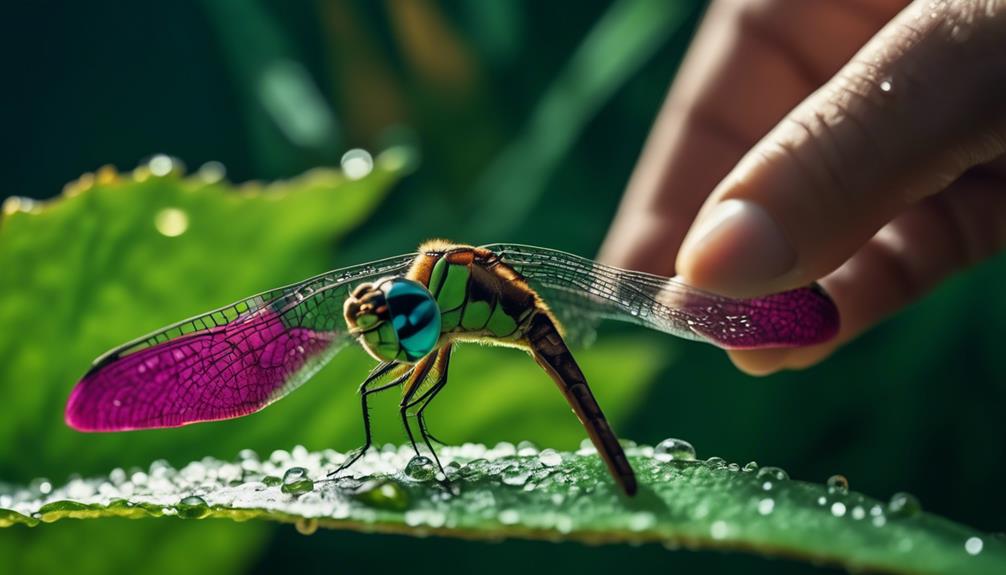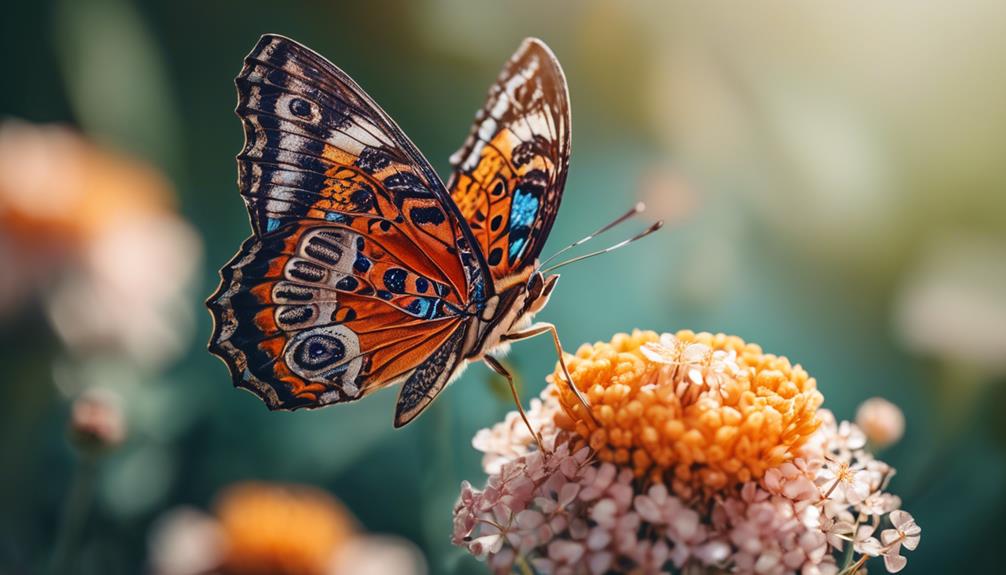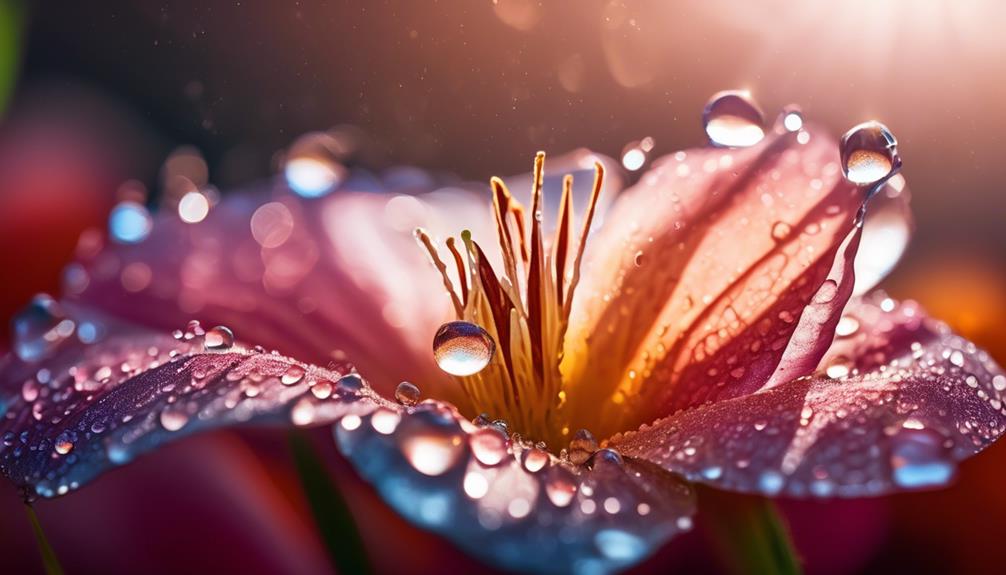Please note this post may contain affiliate links picked by me (Jay) that I have deemed may be of interest or relevant to you the reader of this.
These links do not affect the cost of the thing if you decide to purchase but i may get a little money if you choose to purchase.
For more information on my affiliate link policy click here.
Did you know that macro photography can reveal intricate details that are often invisible to the naked eye? As a novice in the world of macro photography, I was amazed to discover the countless possibilities and stunning images that can be captured up close.
Whether you're fascinated by the delicate patterns on a butterfly's wings or the intricate texture of a flower petal, mastering the art of macro photography can open up a whole new world of creativity.
In this discussion, I will be sharing five essential techniques that will help you elevate your macro photography skills to the next level. So, grab your camera and get ready to embark on a journey of discovery and awe-inspiring imagery.
Key Takeaways
- Choose a macro lens with features like high magnification ratio, wide aperture, and image stabilization for optimal macro photography.
- Control depth of field by adjusting the aperture, allowing for creative compositions with selective focus and bokeh effects.
- Experiment with lighting techniques, such as utilizing natural light or artificial lighting options, to enhance the visual impact of macro photographs.
- Achieve sharp focus by using single-point autofocus, overcoming handheld shooting challenges, and considering focus stacking for subjects with depth.
Selecting the Right Macro Lens
When diving into the captivating world of macro photography, choosing the perfect macro lens is a pivotal step towards capturing stunningly detailed close-up shots. The right macro lens can make all the difference in capturing the intricate details and textures of your subjects, whether it's tiny flowers, insects, or even droplets of water.
To ensure you make an informed decision, it's important to consider the features and compatibility of different macro lenses. Macro lens features play a crucial role in determining the quality of your close-up shots. Look for lenses with a high magnification ratio, which will allow you to capture even the smallest details. A lens with a wide aperture will provide a shallow depth of field, allowing you to isolate your subject and create stunning bokeh effects. Image stabilization is another useful feature to look for, as it helps counteract camera shake when shooting handheld.
Equally important is macro lens compatibility. Depending on your camera brand, you'll need to choose a lens that's compatible with your camera's mount. It's also worth considering whether the lens is compatible with any additional accessories you may want to use, such as extension tubes or macro filters.
Mastering Depth of Field
Now that you have selected the perfect macro lens to capture those mesmerizing close-up shots, let's explore the art of mastering depth of field. Understanding aperture settings for macro photography is crucial in achieving stunning images. Here are three key points to keep in mind:
- Aperture and Depth of Field: Adjusting the aperture allows you to control the depth of field in your macro shots. A wider aperture, like f/2.8, creates a shallow depth of field, resulting in a blurred background that brings your subject into focus. On the other hand, a narrower aperture, such as f/16, increases the depth of field, keeping more of the image in focus.
- Selective Focus and Bokeh: With macro photography, you have the opportunity to create beautiful bokeh effects. By using a wide aperture and focusing on your subject, you can achieve a shallow depth of field, highlighting the details of your subject while creating a creamy, blurred background. Experiment with different aperture settings and distances to create unique and captivating bokeh.
- Creative Compositions: Mastering depth of field opens up endless possibilities for creative compositions. By selectively focusing on specific elements within your macro scene, you can guide the viewer's attention and create visually interesting images. Play with different depths, angles, and subjects to create innovative compositions that showcase both the foreground and background elements.
Understanding aperture settings and utilizing creative bokeh effects are essential for mastering depth of field in macro photography. These techniques will allow you to capture mesmerizing close-up shots with a touch of innovation and artistry.
Proper Lighting for Macro Photography
To capture stunning macro photographs, proper lighting is essential for highlighting the intricate details of your subjects. Whether you're utilizing natural light or using artificial lighting techniques, understanding how to manipulate light is crucial for achieving exceptional macro shots.
When it comes to natural light, timing is everything. Early morning and late afternoon are ideal for macro photography because the light is softer and warmer, casting a beautiful glow on your subjects. You can also experiment with diffusing the sunlight by shooting through a thin fabric or placing a translucent material between your subject and the light source. This technique helps to soften the harsh shadows and create a more even lighting.
On the other hand, artificial lighting techniques can provide you with more control over the lighting conditions. One popular method is using a ring light, which attaches to your camera lens and provides even illumination around your subject. Another option is using a macro flash, which allows you to adjust the intensity and direction of the light for precise lighting control.
Here's a table that highlights the advantages and considerations for both natural and artificial lighting techniques:
| Natural Light | Artificial Light |
|---|---|
| Soft and warm lighting | Controlled lighting conditions |
| Creates beautiful glow | More precise lighting control |
| Diffusion helps soften shadows | Requires additional equipment |
| Timing is crucial | Requires learning and experimentation |
Achieving Sharp Focus in Macro Shots
Achieving sharp focus in macro shots requires careful attention to detail and precise focusing techniques. When it comes to macro photography, getting your subject in sharp focus can be a real challenge. To help you capture those stunning close-up details with precision, here are three essential tips:
- Achieving accurate autofocus in macro photography: Most cameras have autofocus capabilities, but in macro photography, it's important to use the right autofocus mode. Switch to single-point autofocus to ensure that the camera focuses precisely on your subject. This will help you achieve sharp focus and capture all the intricate details.
- Overcoming challenges of handheld macro shooting: Macro photography often requires shooting handheld, which can introduce camera shake and result in blurry images. To overcome this challenge, use a fast shutter speed to freeze any movement. Additionally, practice proper handholding techniques, such as bracing your elbows against your body or using a tripod for added stability.
- Focus stacking for ultimate sharpness: When shooting macro subjects with depth, it can be difficult to achieve sharp focus throughout the entire image. Focus stacking is a technique where multiple images are taken at different focus distances, and then combined in post-processing to create a final image with optimal sharpness from front to back.
Composition Tips for Macro Images
When composing macro images, consider the placement and arrangement of your subject to create visually captivating and impactful photographs. Capturing unique perspectives and utilizing natural elements for creative compositions are key elements in achieving stunning macro images that stand out from the rest. By thinking outside the box and experimenting with different angles, you can create images that showcase your subject in a new and exciting way.
One effective technique is to get down to eye level with your subject, allowing you to capture their world from a perspective that is rarely seen. This can add depth and a sense of intimacy to your photographs, drawing the viewer in and making them feel connected to the subject.
Another way to create visually interesting compositions is to use natural elements as a backdrop or frame for your subject. This can include flowers, leaves, or even water droplets. By incorporating these elements, you can add texture, color, and depth to your images, making them more dynamic and engaging.
To help you understand the importance of composition in macro photography, I have created a table below that showcases the impact of different techniques on the overall aesthetics of the image:
| Technique | Result |
|---|---|
| Eye-level perspective | Creates a sense of intimacy and connection |
| Natural element framing | Adds texture, color, and depth to the image |
| Creative angles | Highlights unique details and perspectives |
| Negative space | Draws attention to the subject |
Frequently Asked Questions
How Do I Choose the Right Camera Settings for Macro Photography?
When it comes to choosing the right camera settings for macro photography, there are a few key things to consider.
First, lighting techniques play a crucial role in capturing stunning macro shots. Experiment with different angles and intensities to find the perfect balance.
Additionally, post-processing tips can greatly enhance your macro images. Take advantage of editing software to bring out the intricate details and vibrant colors.
With the right camera settings and a little creativity, you'll be capturing breathtaking macro shots in no time.
What Are Some Common Mistakes to Avoid When Shooting Macro Images?
When shooting macro images, it's important to avoid common lighting mistakes that can wash out details and flatten the subject.
To achieve sharp focus, I recommend using a tripod to eliminate camera shake and experimenting with different focus points to find the sweet spot.
Remember, macro photography offers a unique perspective, so don't be afraid to get creative and try new techniques.
With practice and innovation, you'll capture stunning macro images that showcase the beauty of the miniature world.
Are There Any Recommended Accessories for Macro Photography?
There are definitely some recommended accessories for macro photography that can take your images to the next level.
One essential accessory is recommended lighting equipment, such as a ring light or a macro flash. These can help you achieve proper lighting and eliminate shadows in your macro shots.
Another crucial accessory is different lens options for macro photography, like a dedicated macro lens or extension tubes. These lenses allow you to get up close and capture intricate details with stunning clarity.
How Can I Eliminate Camera Shake When Shooting Macro Shots?
To eliminate camera shake when shooting macro shots, there are a few key techniques I've found helpful.
Firstly, proper lighting is crucial for capturing clear, sharp images.
Using a tripod or stabilizing your camera can also greatly minimize shake.
Additionally, utilizing the autofocus or manual focus features on your camera can help achieve sharp focus in your macro shots.
What Are Some Creative Ways to Use Macro Photography Beyond Capturing Close-Up Details?
When it comes to macro photography, there's so much more to explore beyond capturing close-up details. One exciting way to get creative is by experimenting with alternative subjects. Instead of just photographing flowers or insects, try capturing the textures and patterns of everyday objects up close.
Another innovative approach is to incorporate macro photography into abstract art. Play with light, shadows, and angles to create visually stunning and thought-provoking images.
The possibilities are endless, and macro photography opens up a whole new world of artistic expression.
Conclusion
So, there you have it – five essential macro photography techniques for novices.
- With the right lens, a good understanding of depth of field, proper lighting, and sharp focus, you'll be well on your way to capturing stunning macro shots.
- Remember, composition is key, so don't forget to experiment and get creative with your images.
- As the famous photographer Ansel Adams once said, 'Photography is more than a medium for factual communication of ideas. It's a creative art.'
- So go out there and let your creativity shine through your macro photography!


